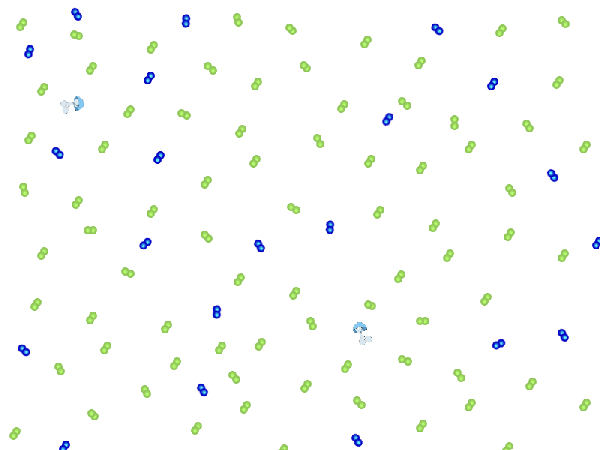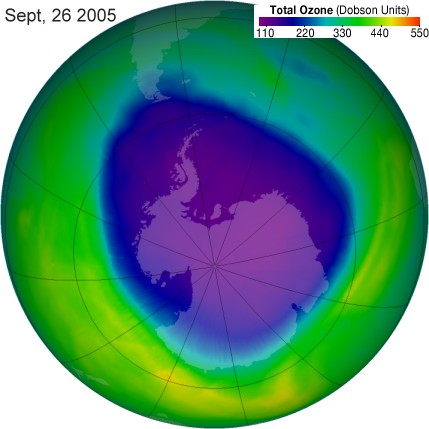|
|
 |
|
|
|
 |
 |
|
|
 |
The Antarctic ozone hole 2005
In this text we tell you a little bit about what scientists observe and how we can measure what really happens with the ozone hole. |
|  |
You probably learned already that the reality is sometimes a bit more complicated than images we paint of it. If we were to try to keep in mind every detail, we would forget the most important things. The film about me told you the most important things ... scientists often study in a bit more detail.
|  | |
| | | |  | |
A scientist would first tell you that ozone molecules defend you but that they do not form a thin layer in the air. In fact he is right. In the real air me and my friends do not stand side by side and hold our hands forming a barrier with our helmets. We are spread here and there in the air, between lazy nitrogen molecules and active oxygen molecules like in the picture below. Can you find me there?
|
 |
 |
|
|
I guess you are very sceptical now. If there are only so few of us among so many other air molecules, how can we catch the ultraviolet rays?
Hmmm ... you see there above only a tiny little part of the air. But there are BILLIONS of us spread in the whole atmosphere. If the ultraviolet rays manage to escape between 1000 of us there is always 1 more who is in the way and catches the UV warrior. This is how we protect you.
Well OK, I have to admit, sometimes a few UV warriors escape and manage to reach the Earth's surface, but only a few do not do much harm and are sometimes even needed as long as there are enough ozone molecules to catch the rest.
|
Scientists built instruments which observe only ozone molecules. They can see how much ozone is in the whole atmosphere and show this in diagrams and maps. In the colored area of the animation below ozone molecules over the South Pole are shown. Researchers say: if there are less then 200 Dobson Units (a scientific unit) of ozone, then it becomes very dangerous and we have an ozone hole. For you I made it is a bit easier. If there are less than 5 Ozzy Ozones in the area, we have an ozone hole. Can you find out in which months of the year 2005 this is the case?
|
You see, the ozone hole does not stay for the whole year. And it is not everywhere around the world, but strongest around the South Pole over the Antarctic continent. Fortunately not many people live there in the ice, but Australia, New Zealand and the South end of South America are close to the border of the hole.
|
 |
 |
|
On this map from the National Aeronautics and Space Administration of the United States, NASA, you can see how the ozone hole reaches up to South America. The South Pole is the dot in the middle. Can you show me where it is and where South America is?
Not only there but everywhere in the world the ozone layer becomes thinner. So all of us have to be careful and protect ourselves as I told you in the film.
How long will it last until the ozone hole is closed again?
|
 |
 |
|
In the diagram above you see how the size of the ozone hole changes over the year, 2005 in red, 2004 in blue and 2003 in green. The hole always begins to grow in August and to shrink again in October. In 2004 it was a bit smaller than 2005, in 2003 it was one of the biggest ever - as large as the whole of North America. But every year it comes back. In Europe and North America the most dangerous time is spring. The sun seems to be weak and not yet warm. But the ozone layer is very thin and we can be easily burnt by ultraviolet rays.
Scientists assume that it will take until 2050 before the ozone layer is fully back to hoe it was before CFCs. But this will be only the case if we do not release any harmful chemicals to the air.
|
|
 |
|







